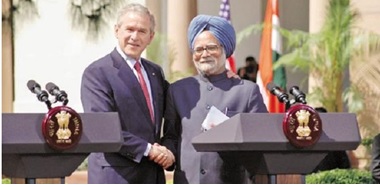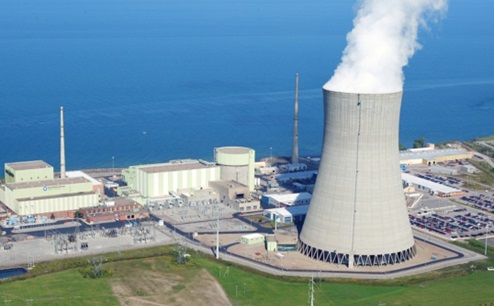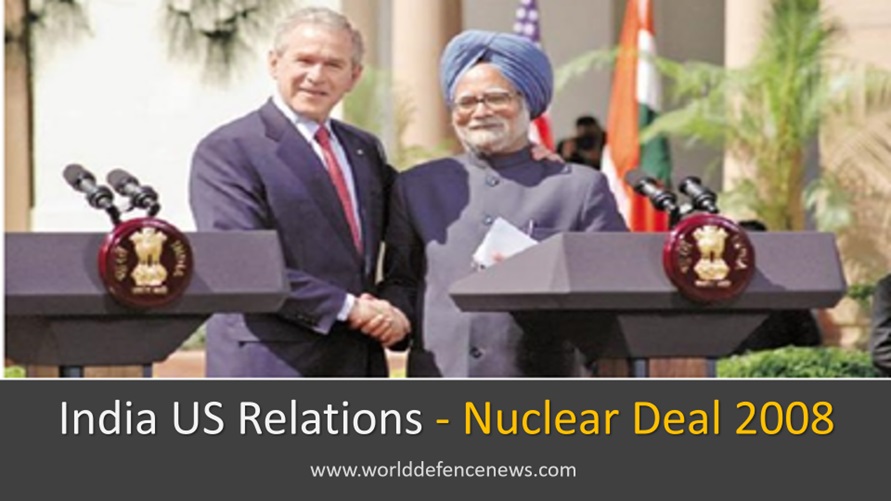
India US Nuclear Deal
India US Historic Nuclear Deal 2008 , Referred As 123 Agreement
India US Nuclear Deal.
The India-US Civil Nuclear Agreement, also known as the 123 Agreement, is a landmark bilateral nuclear agreement signed between India and the United States in 2008. The deal aimed to strengthen the strategic partnership between the two countries and promote peaceful nuclear cooperation.
Under the agreement, the US agreed to provide India with access to civilian nuclear technology, equipment, and materials, which were previously restricted due to India’s status as a non-signatory to the Nuclear Non-Proliferation Treaty (NPT) and its nuclear weapons program.
In exchange, India agreed to separate its civilian and military nuclear facilities, place its civilian facilities under International Atomic Energy Agency (IAEA) safeguards, and adhere to various non-proliferation commitments.
The nuclear agreement was a historic landmark in the India Us Relations.

The agreement faced significant political challenges, with critics arguing that it undermined the global non-proliferation regime and provided India with access to nuclear technology without sufficient safeguards. Supporters, on the other hand, argued that the deal would help bring India into the mainstream of global nuclear commerce and strengthen the strategic partnership between the two countries.
Despite the controversy, the deal was eventually approved by both the Indian and US governments, and has since led to increased cooperation in the areas of civil nuclear energy, scientific research, and technology development.
India US Nuclear Deal 2008 - Important features
The India US nuclear deal, also known as the “123 Agreement”, was a landmark agreement signed between the two countries in 2008.
The India-US nuclear deal was significant because it marked a shift in the US’s policy towards India’s nuclear program. It was a key milestone in the bilateral relationship between the two countries and paved the way for greater cooperation in the areas of energy, trade, and security.
Here are some of the important features of the deal:
1. Civil Nuclear Cooperation
The deal allows India access to US civilian nuclear technology and fuel, which had been restricted since India’s first nuclear test in 1974.
2. Separation Plan
As part of the deal, India agreed to separate its civilian and military nuclear facilities and place its civilian nuclear reactors under International Atomic Energy Agency (IAEA) safeguards. This move helped to bring India’s nuclear program into the mainstream of international nuclear commerce.
3. Nuclear Liability
The deal also includes provisions related to nuclear liability. India agreed to set up a nuclear insurance pool to cover any damages that may result from a nuclear accident. This was a key issue of concern for the US, as its nuclear suppliers were hesitant to enter the Indian market due to India’s nuclear liability laws.
4. Export Controls
The deal also requires India to adhere to the guidelines of the Nuclear Suppliers Group (NSG), a group of countries that seeks to prevent nuclear proliferation by controlling the export of nuclear materials and technology.
5. Bilateral Cooperation
The deal includes provisions for bilateral cooperation in areas such as nuclear safety, security, and research. The US and India also agreed to work together to develop new technologies for nuclear energy, including the use of thorium as a fuel.
India US Relations - Nuclear Deal 2008
Indo-US Civil Nuclear Cooperation
Civil nuclear cooperation refers to the sharing of civilian nuclear technology, equipment, and fuel between countries for peaceful purposes. The cooperation can involve various areas of nuclear technology, including nuclear power generation, nuclear medicine, and nuclear research.
In the case of India and the US, the civil nuclear cooperation agreement signed in 2008 allowed India access to US civilian nuclear technology and fuel, which had been restricted since India’s first nuclear test in 1974. The deal required India to separate its civilian and military nuclear facilities and place its civilian nuclear reactors under International Atomic Energy Agency (IAEA) safeguards.
The cooperation between India and the US in the civil nuclear sector has since expanded, with the two countries signing several agreements and collaborations. Some of the key areas of cooperation are:
1. Nuclear Power
The US has been assisting India in developing its nuclear power sector. The two countries have signed several agreements for cooperation in nuclear power generation, including the construction of new nuclear power plants and the supply of nuclear fuel.
2. Research And Development
The US and India have been working together to develop new nuclear technologies, including the use of thorium as a fuel. The US has also provided assistance to India in areas such as nuclear safety and waste management.
3. Nuclear Medicine
The US has been working with India to enhance its capabilities in nuclear medicine, including the development of new diagnostic and therapeutic techniques.
4. Export Controls
The US has been working with India to strengthen its export control regulations and to bring them in line with international standards.



